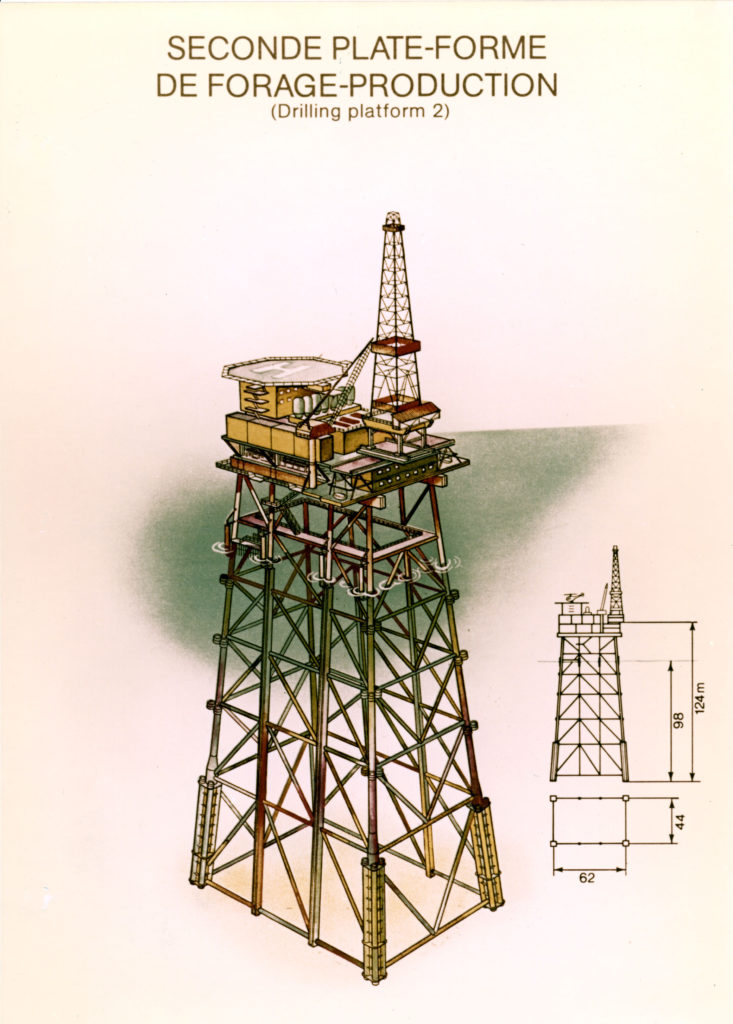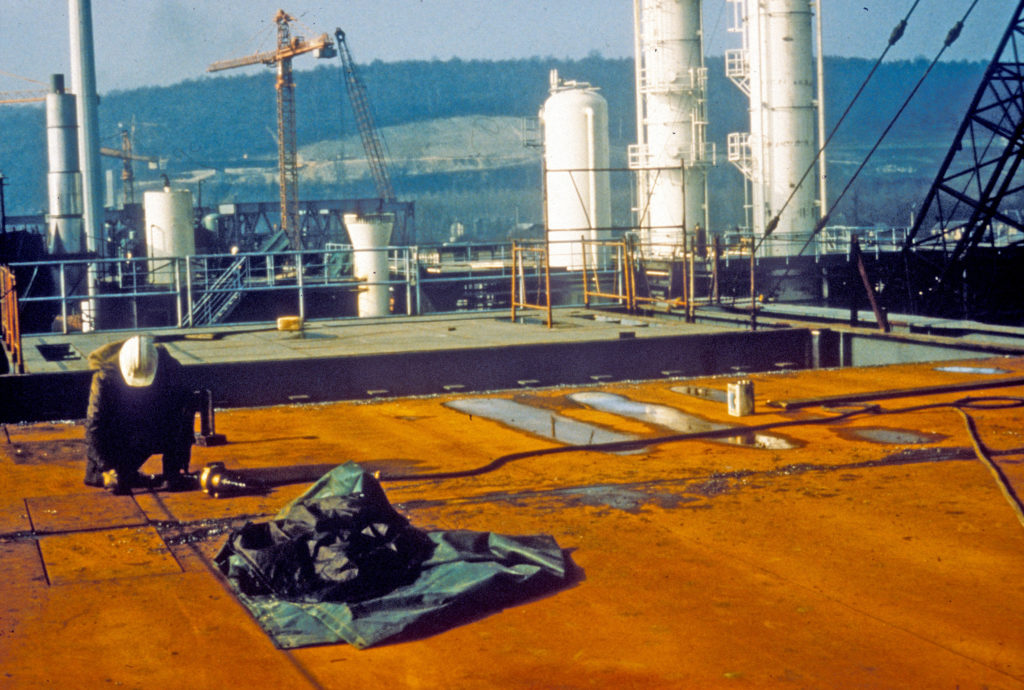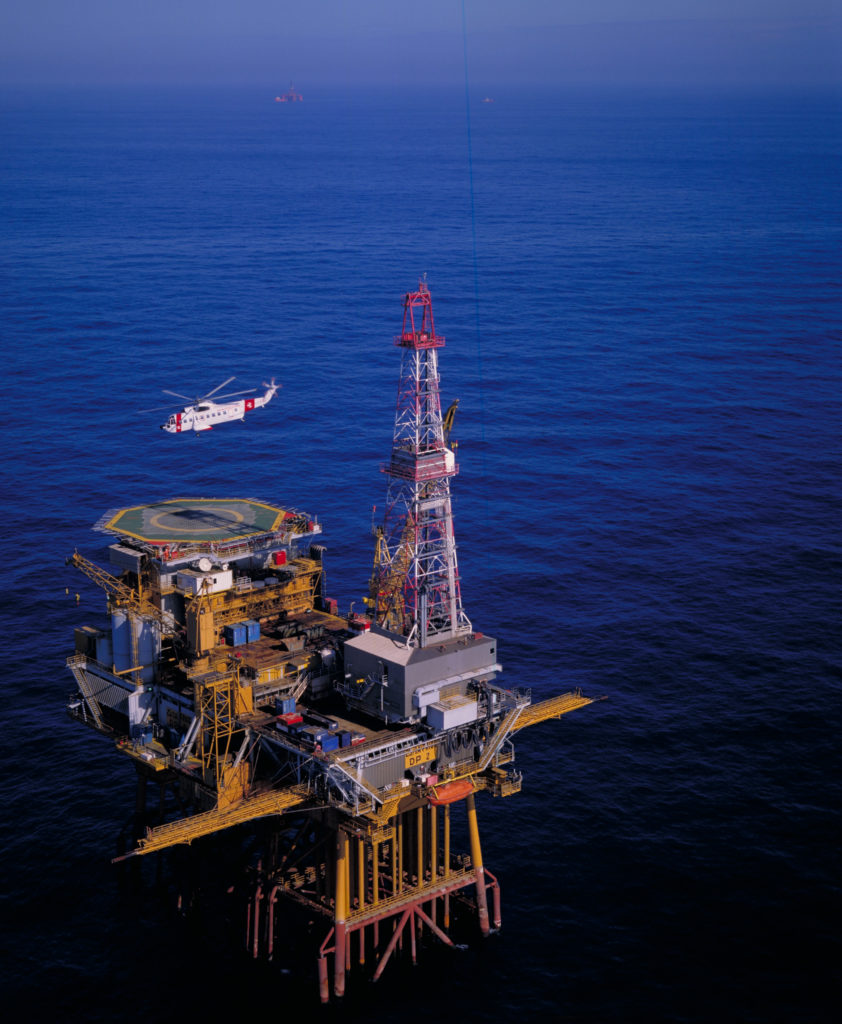Drilling Platform 2 – DP2

 Bore- og produksjonsplattformen DP2
Bore- og produksjonsplattformen DP2Its jacket and module support frame were fabricated by Union Industrielle et d’Enterprise (UIE) at Cherbourg in France, its modules came from by the same company at St Wandrille, and the helideck was built at Lowestoft in the UK. All the modules were prefabricated and transported by barge to Frigg in May-June 1976.
The eight-leg steel jacket was launched into the sea on 11 May, in 98 metres of water, and piled to the seabed. Positioning this structure presented no major problems – an important step for Elf, since considerable calculations and tests had been carried out for the launch after the DP1 accident. The module support frame was lifted into place by the Micoperi PM27 crane vessel on 4 August, with the quarters module and helideck following in late October. Installation of the production modules, including the Forex Unifor I drilling rig, continued until the following spring. The first production well was spudded in July 1977. The whole process from loadout to the start of drilling lasted from May 1976 to July 1977.
The first production well to be drilled from drilling platform 2 (DP2) was spudded in November 1977, and first gas was produced from this installation in August 1978 – one year after CDP1 came on stream. Because of the Frigg reservoir’s special qualities, with high permeability, the production wells were concentrated in a small area of five square kilometres. The whole reservoir covered 115 square kilometres. Twenty-four wells were drilled with a maximum deviation of 45 degrees. Following a reassessment of the reservoir in 1990, CDP1 on the UK side was shut down and wells were drilled from DP2 to replace those on the abandoned platform. Drilling technology had advanced so far by then that wells could be driven horizontally over long distances.
DP2 stands on a eight-leg steel jacket piled to the seabed. The topsides with all equipment was 25 metres above the sea surface. Four modules were positioned one after another on the support frame. Each had two stories, with the lower for production and upper for drilling modules.
 Bore- og produksjonsplattformen DP2
Bore- og produksjonsplattformen DP2The wellheads were installed on the lower deck in module one, with 12 wells on either side of a firewall, while the derrick stood on the upper deck. Each wellhead was equipped with three safety valves – one downhole, one remotely operated master valve and one manually operated master valve. Module 2 initially treated gas from the wellheads to remove water, condensate (light oil) and sand. However, it soon transpired that the reservoir produced little water or sand and this equipment
was disconnected.
The volume of gas flowing from each well was controlled by a choke valve in module 3. From here the gas (which still contained some condensate) flowed via a manifold to one of two 26-inch flowlines for onward transport to TCP2.
Workshops, transformers, fire pumps and an instrument room were located on the lower deck in module 4, with the control room and communication equipment on the top deck. The living quarters, with a helideck, were positioned on top of module 4. The quarters module was upgraded in 1980.
DP2 was shut down on 26 October 2004 together with the rest of the Frigg field.
See technical drawings and documentation of DP2 in the article Technical Documentation DP2.
 Bore- og produksjonsplattformen DP2
Bore- og produksjonsplattformen DP2